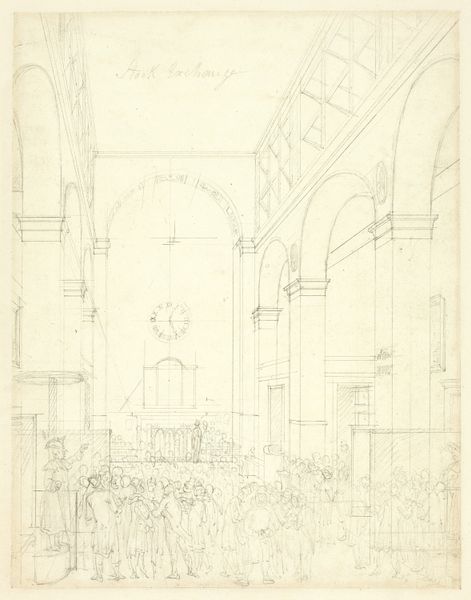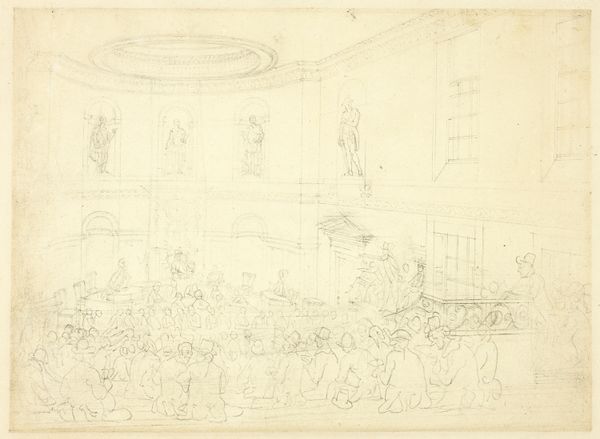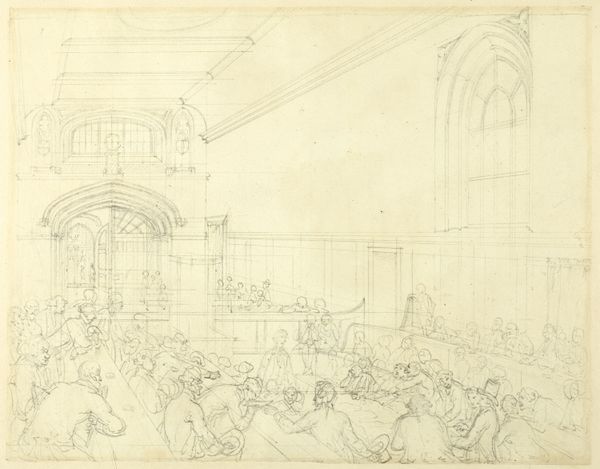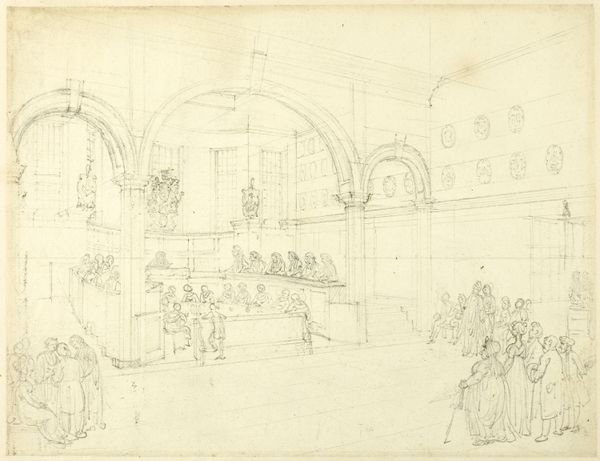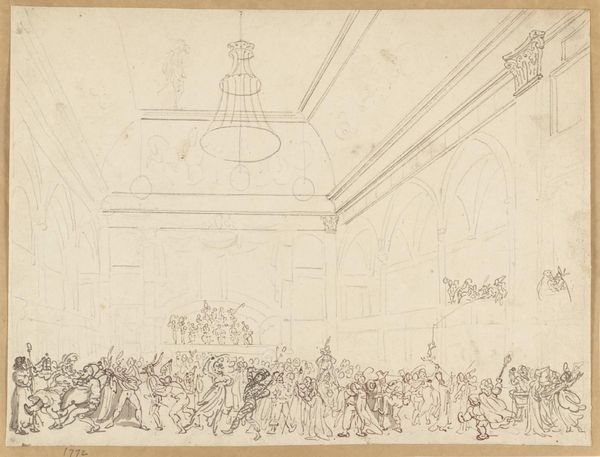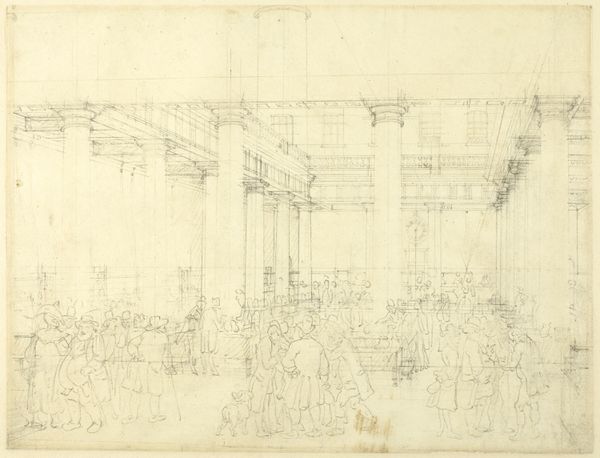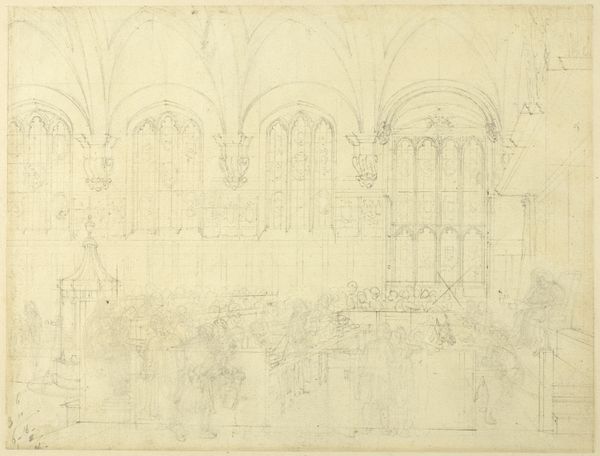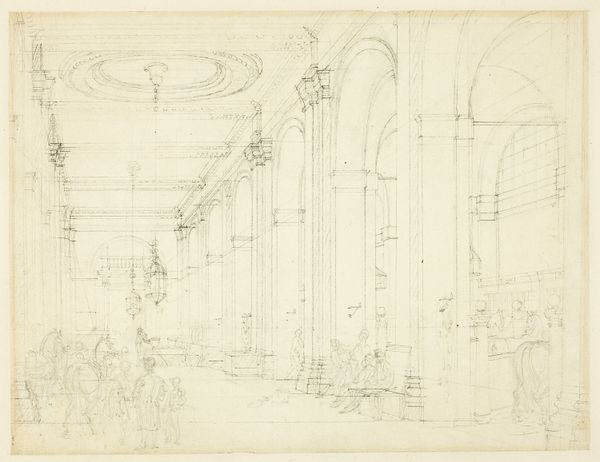
Study for Common Council Chamber, Guild Hall, from Microcosm of London c. 1808
0:00
0:00
drawing, print, paper, pencil, graphite
#
portrait
#
drawing
#
medieval
# print
#
etching
#
perspective
#
paper
#
form
#
classicism
#
pencil
#
line
#
graphite
#
cityscape
#
history-painting
#
academic-art
#
watercolor
Dimensions: 257 × 197 mm
Copyright: Public Domain
Curator: Looking at this pencil and graphite study by Augustus Charles Pugin from around 1808, what are your initial thoughts? It’s called "Study for Common Council Chamber, Guild Hall, from Microcosm of London." Editor: Immediately, I'm struck by the contrast. The delicate, almost ephemeral lines hint at the weight and gravitas associated with such a formal, civic space. You get a sense of power but also of incredible draughtsmanship; the labor and the planned production of an image meant for dissemination through print. Curator: Precisely. The Guildhall, a vital institution in London's civic life, is portrayed as a stage for social performance. It's not merely a location; Pugin shapes it into a symbol of institutional authority through calculated perspective and the organized placement of figures. Editor: The repetition of figures fascinates me. There’s something almost… manufactured about their rendering. Are they truly individualized or simply ciphers within this elaborate display of power and governance? One might analyze whether they all follow clothing guides dictated by the city or guilds? Curator: I find that question really engaging, thinking about this study and the print it anticipates as playing a vital role in the representation of governance, one that arguably legitimizes a social order through a calculated exercise in imagery, and one carefully planned through stages of production. Editor: It makes you think about access too, doesn't it? The final print—its circulation, the audience who viewed it, what social strata consumed it—compared to who might view this drawing itself, if not tucked away. This sketch offers us access, even if only by chance, to the workshop practices and stages of artmaking of its moment. Curator: Definitely. Pugin, in documenting this architecture, essentially codified it as a visual ideal. This image helped spread classical ideals and, in turn, gave symbolic weight to certain power structures. The choice to render it through etching aligns it with similar imagery circulating at the time. Editor: In seeing this image, and in studying Pugin's lines and his almost industrial commitment to replicating that kind of visual, what comes to my mind is how material choices shaped historical perception and preserved institutions. Curator: And I think seeing these details really gives us insight into how the institution wanted to present itself in that specific moment in time. Editor: Absolutely, a powerful and complex image emerges once we acknowledge its many layers.
Comments
No comments
Be the first to comment and join the conversation on the ultimate creative platform.
